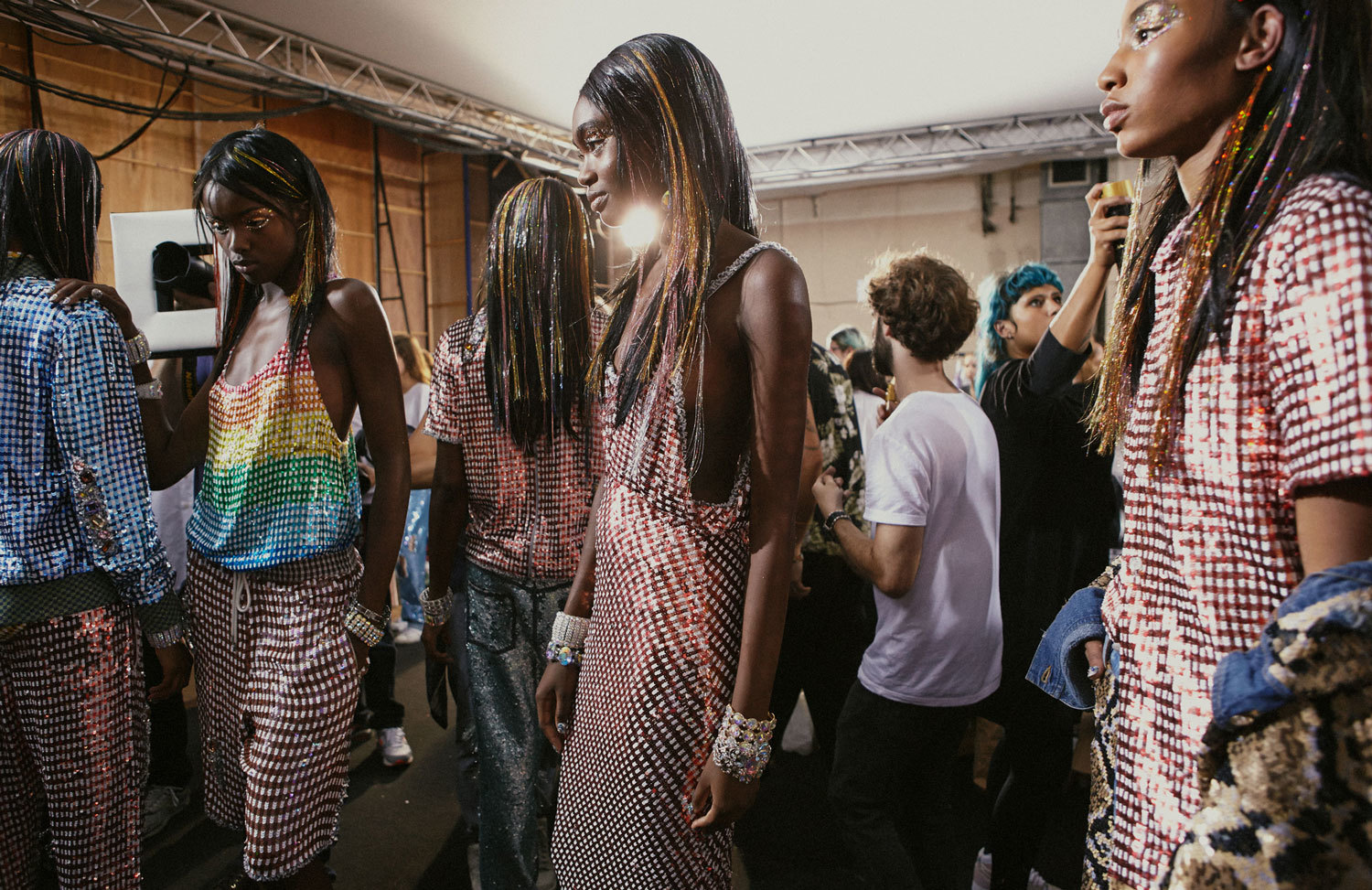How come you chose to only use black models in your last show?
I didn’t set out to make it a political message, but it struck me that if I’d used all white models, no one would have questioned it. The fact that people bring it up, it’s obvious it’s still an issue. People on social media were saying it was as racist as showing all white girls! I do feel that fashion is not very representative of diversity as whole, and I’m not just talking about models. With me, not being a white person, I feel quite conscious of it sometimes.
What are your general criteria when casting?
I like people to have a personality. In the real world, you look for interesting people. When it’s a runway and generic models are coming on, I find that bland. For me it’s more like a movie, with actresses or actors.
Do you have any muses?
Chloe Norgaard. She wasn’t in the last show because she’s not black, but she’s done the three seasons before that. I find her really inspirational. She’s a cool girl. I love her Instagram. She dyes her own hair. She’s always travelling – she’s a modern international hippy.
In India, curves are considered much more beautiful because it’s a sign of fertility and femininity. I think a lot of the women that I grew up obsessing about weren’t girls; they were women and had women’s bodies.
Since your first show in 2004, do you think there have been any improvements in the industry, or changes in ideals of beauty?
There’s more awareness and a broader acceptance to different types of beauty. People accept that beauty is something that you can’t define. It’s a feeling. Having said that, I still think there aren’t enough different models. If you did want to do an all-black casting, it’s still really hard to pull 20 amazing black girls [from agencies].
You lived in India until you were 20. Could you talk about your concept of beauty growing up in India?
In India, curves are considered much more beautiful because it’s a sign of fertility and femininity. I think a lot of the women that I grew up obsessing about weren’t girls; they were women and had women’s bodies.
Who did you love?
They were all 70s and 80s stars who were extremely glamorous women. There was this one film star called Zeenat Aman who was absolutely gorgeous. I think she was runner-up in Miss World, which was quite an amazing thing for an Indian to achieve at the time. After independence it was still a pretty conservative country. She was probably one of the first people to wear a short dress on screen, like a Westerner, and she had curves and she had tits. She was really sexy and became this icon.
Does that idea of beauty remain the same with Indian women today?
It’s quite sad, because in the 90s, Indian women suddenly wanted to look like white women. There was this whole period when all of them looked pretty much the same. They bleached their hair, wore contact lenses, streamlined their bodies. But there are women that have broken away from that and gone back to that more 70s tradition of glamour.
I like how the sari shows off a certain amount of flesh, and women of all ages are comfortable with that.
I think it’s really sexy. I think the sexiness of a sari is the fact that it hides and reveals. You see the back, the navel and a bit of cleavage. I remember one of my Mum’s friends when I was growing up was dressed in saris, but they were always made of French chiffon, so they were really see-through. She would wear these little blouses underneath that were like little bras. They were always bright colours and there was always chiffon falling off her shoulder. Men used to go crazy and she had really long hair, which came down to her knees. It was the sexiest, more erotic thing ever!

When you first moved to London, were you surprised by any of the Western ideas of beauty?
No it wasn’t much of a shock, but it was very different, especially in the 90s because everything got a bit harder, more grunge, quite raw. So it was such a style contrast to that ideal India concept of beauty, which was about being feminine and beautiful, mysterious and exotic.
Can you define beauty?
I think it’s more a quality rather than a physical thing. There’s a unique quality about it that makes it transcend something pretty into something beautiful. I think you remember it more.
Credits
Text Stuart Brumfitt
Photography Piczo
